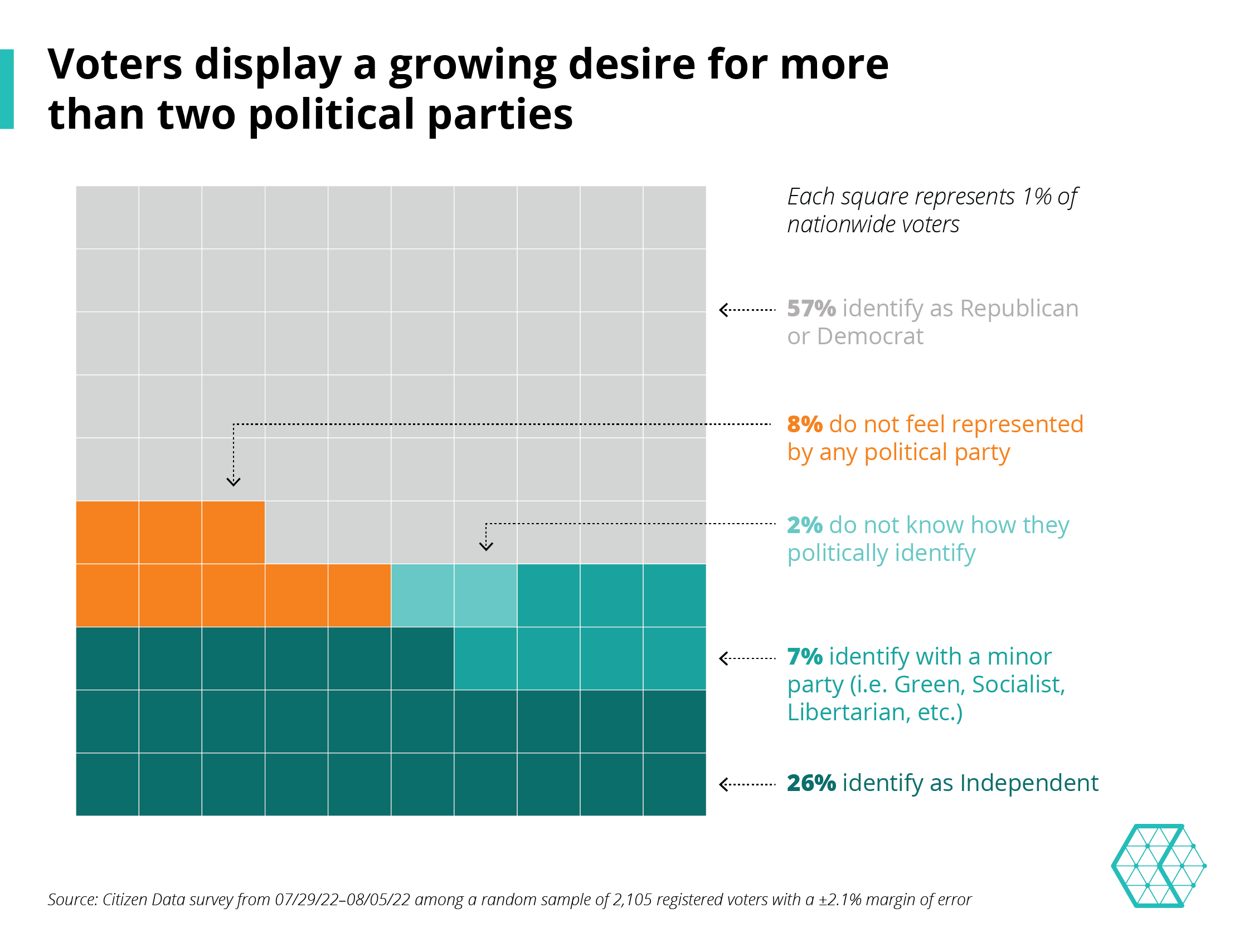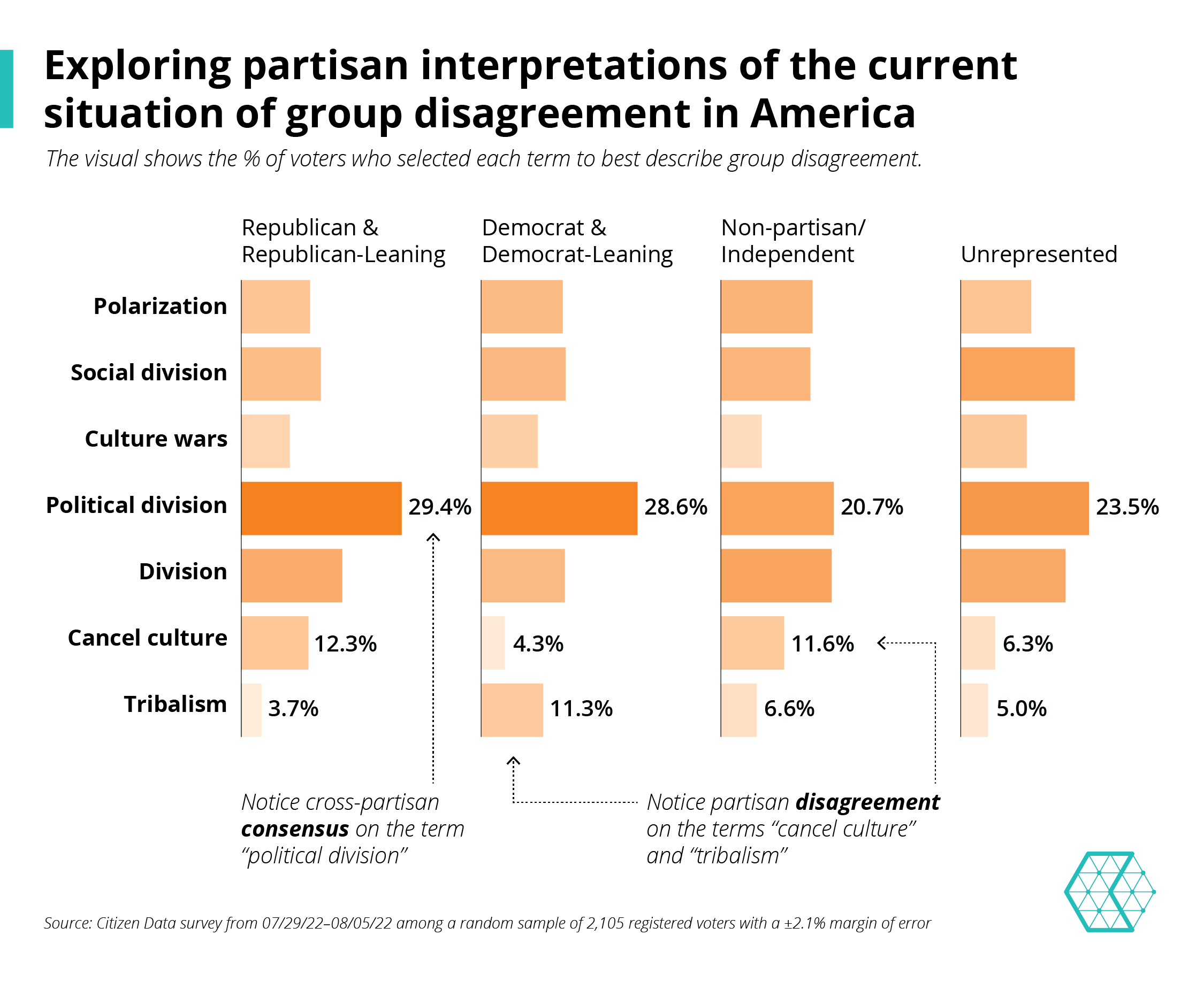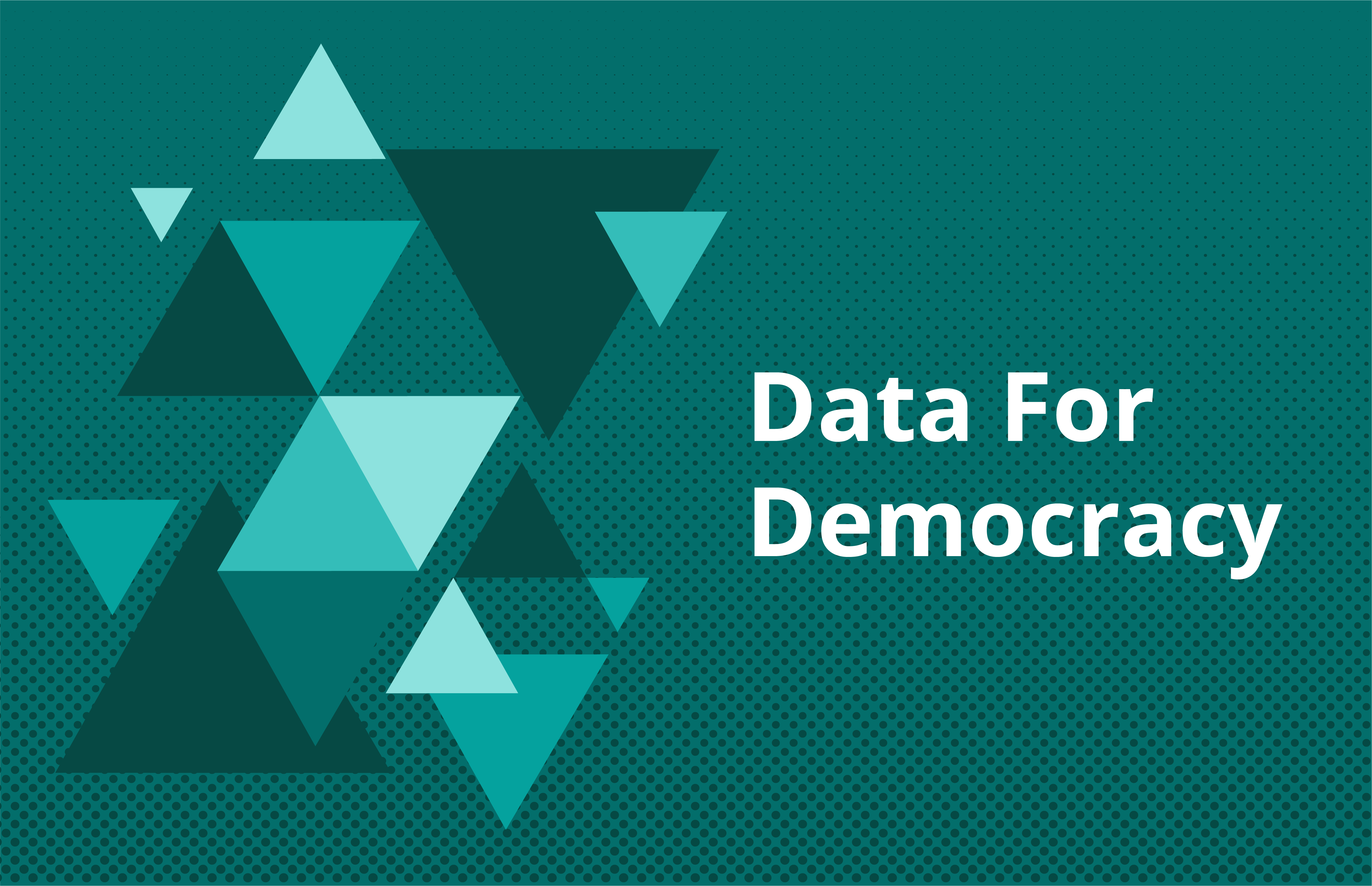Political Division & Third Lane Politics August 28, 2022
Citizen’s latest research — a nationwide survey of 2,105 registered voters — explores how to transcend Republican/Democrat political divides with valuable messaging context.

Since July and Citizen’s Data for Democracy on the topic, third party chatter has ticked up with Liz Cheney’s primary loss, an increase in Independent party registration, and third party ambitions (e.g. Forward Party).
1. Unpacking the Desire for a “Third” Lane
Who is driving third party demand? Our recent research confirms that the youngest voters and more Moderate voters feel the least represented and want political alternatives.
With an expanded set of Party ID options, 15% of all voters chose one of the following alternatives:
- Libertarian, Green, Socialist, and Constitution party
- Other third party on the left and right
- I do not feel represented by any political party
Share this report

Those identifying as Independent or an alternative total 43%. Going deeper, 8% of Americans claim not to feel represented by any party. This is a growing trend; while only 5% of those 65+ express this sentiment, about 10% of 18-34-year-olds feel this way.
2. Americans Agree on Division, Differ on Culprits
When we asked Americans to choose which term or phrase describes disagreements best, almost one in three (27%) chose political division over terms like polarization; both Republicans and Democrats see political division as a problem.

However, Rs and Ds appear to disagree on the source of divisions, and we see this in the numbers of Rs and Independents who choose cancel culture and Ds who choose tribalism as most apt to describe disagreements today.
3. Breaking Media Bubbles
Conflicting understandings of political division can be explained, in large part, by the different media sources which shape American attitudes.

It is not insignificant that 9% of Republicans and Republican-leaners chose CNN as a favorite news source, while 10% of Democrats and Democrat-leaners chose Fox News. In such polarized times, this 19% is an important contingent to help build bridges.
Data-In-Action
Learning from these insights, we suggest:
- Young voters have malleable political views; focus on organizing them now
- Political division is a common concern and a “way in” to motivate change
- Cancel culture / Tribalism are resonant concerns for Rs and Ds, respectively, and any political innovation effort must address both
- Media echo chambers must be breached in order to break through
If you have any questions don’t hesitate to reach out. Enjoy Citizen’s Data for Democracy series? You can find past installments here.
The Antidote to the Primary Problem?
Alaska’s primary and special elections used a new system that shows promise for electing a more diverse slate of candidates who reject extremism.
